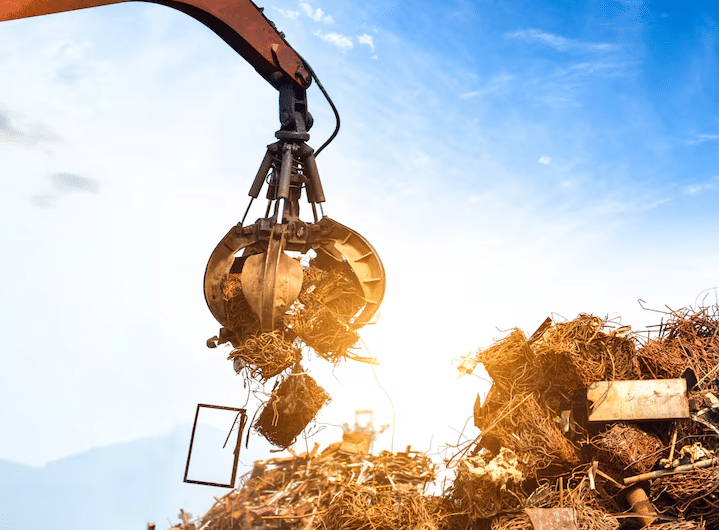Light Demolition Done Right: A Guide to Safe and Efficient Structure Removal

Sometimes, clearing space requires more than just hauling away junk—it demands tearing down unwanted structures. Whether it’s an old shed, a deteriorating mobile home, or a carport that has seen better days, light demolition provides an effective way to remove structures safely and efficiently.
This guide explores the best practices for light demolition, the benefits of hiring professionals, and how to ensure the process is both safe and environmentally responsible.
Understanding Light Demolition
Light demolition refers to the process of dismantling small structures without the use of heavy machinery. It is commonly required for residential and commercial properties where outdated or damaged structures need to be removed.
Common Light Demolition Projects
- Sheds and outdoor storage units – Old wooden or metal sheds can become unstable over time and need to be removed for safety or space optimization.
- Mobile homes – Aging mobile homes may require demolition if they are beyond repair or need to be replaced with newer models.
- Carports and detached garages – Whether due to storm damage or structural wear, these spaces often require removal before rebuilding.
- Barns and small outbuildings – When no longer in use, old barns and storage buildings can become a hazard and should be safely dismantled.
- Decks and patios – Worn-out decks and patios not only detract from a home’s appearance but can also pose safety risks.
Each of these projects requires careful planning and execution to ensure a safe and successful demolition.
Safety First: Preparing for Light Demolition
Demolition is more than just knocking things down—it requires a strategic approach to minimize risks and prevent damage to surrounding areas. Before starting any project, proper preparation is essential.
1. Assess the Structure
Before tearing anything down, take a close look at the structure to identify any potential hazards. Consider the following:
- Is the structure connected to electrical wiring, gas lines, or plumbing?
- Are there any hazardous materials, such as asbestos or lead paint?
- Is the structure unstable or at risk of collapsing unexpectedly?
A thorough assessment helps determine the safest approach for dismantling.
2. Obtain Necessary Permits
Many local areas require permits for demolition projects, even for small structures. Checking with local authorities ensures compliance with regulations and avoids fines or project delays.
3. Wear Proper Safety Gear
Demolition work involves sharp objects, falling debris, and dust, so wearing the right protective equipment is essential. This includes:
- Hard hats to protect against falling objects
- Safety goggles to shield eyes from dust and debris
- Heavy-duty gloves to prevent cuts and splinters
- Sturdy boots with slip-resistant soles for stability
- Dust masks or respirators, especially when dealing with older structures that may contain hazardous materials
4. Plan for Debris Removal
Removing the structure is only part of the job—proper disposal of the debris is just as important. Some materials can be recycled, while others must be disposed of according to local regulations. Having a plan in place ensures a smooth cleanup process.
Step-by-Step Guide to Light Demolition
While each project is unique, the general process for light demolition follows a series of structured steps.
Step 1: Disconnect Utilities
If the structure has electrical wiring, water lines, or gas connections, these must be shut off before demolition begins. Failing to do so can lead to serious accidents or property damage.
Step 2: Remove Fixtures and Non-Structural Elements
Before tackling the main structure, remove doors, windows, shelving, and any attached fixtures. This makes it easier to dismantle the frame while reducing the risk of broken glass or sharp objects.
Step 3: Start from the Top Down
Demolishing a structure from the top down ensures better control over falling debris. Begin with the roof and work downward to avoid sudden collapses that could pose a safety risk.
Step 4: Dismantle Walls and Support Beams
Once the roof is removed, carefully take down walls and supporting beams. If possible, work with a team to ensure that weight is evenly distributed and no sections fall unexpectedly.
Step 5: Clean Up and Dispose of Debris
Sorting materials into recyclable and non-recyclable piles helps streamline the disposal process. Many demolition services prioritize eco-friendly disposal methods to minimize waste.
When to Hire a Professional for Light Demolition
While some small-scale demolitions can be handled by homeowners, there are several situations where hiring professionals is the best choice.
1. Safety Concerns
Structures with structural damage, mold, or hazardous materials require specialized handling to ensure safety. Professional teams have the right training and equipment to manage these risks.
2. Large or Heavy Structures
Removing a large mobile home, barn, or multi-section shed is physically demanding and requires careful coordination. Professionals can complete the job faster and with less risk of injury.
3. Time Efficiency
Demolition is time-consuming, and for many property owners, handling it alone can be overwhelming. A professional service ensures the job is done quickly and efficiently, allowing homeowners to move forward with their renovation or rebuilding plans.
4. Debris Removal and Site Cleanup
Disposing of debris can be one of the most challenging aspects of demolition. Junk Raider, for example, provides both demolition and junk removal services, ensuring that the property is left clean and ready for its next use.
Eco-Friendly Demolition: Reducing Waste and Recycling Materials
Demolition projects can generate a significant amount of waste, but responsible disposal practices help minimize environmental impact.
1. Recycling Materials
Many materials from light demolition projects can be repurposed or recycled, including:
- Wood from sheds and decks, which can be reused for construction or turned into mulch
- Metal roofing and beams, which can be melted down and repurposed
- Concrete from patios and foundations, which can be crushed and used as a base for new construction
2. Donating Usable Items
Windows, doors, and fixtures in good condition can often be donated to organizations that support home improvement projects for families in need.
3. Proper Disposal of Hazardous Waste
Older structures may contain materials such as asbestos, lead paint, or treated wood that require special disposal methods. Professional demolition teams ensure that these materials are handled according to environmental guidelines.
Conclusion
Light demolition is an essential step in clearing space for new projects, whether it’s removing an old shed, dismantling a mobile home, or tearing down a deteriorating deck. With the right preparation, safety measures, and disposal plan, the process can be efficient and hassle-free.
For those looking for a stress-free solution, companies like Junk Raider offer professional demolition services that ensure safety, efficiency, and responsible waste disposal. Whether handling the project independently or hiring experts, following best practices guarantees a smooth and successful demolition process.

Creative Ways to Utilize Business Signage Beyond Branding

How to Identify the Best Watch Brands for Investment

Why Your Company Should Join Hands With Ruby Digital?

Pre-Requisites Before Applying for an Instant Personal Loan

Embrace the Magic of Turkey: An Unforgettable Visit

Unique Factors Contributing to Slip-and-Fall Accidents in Charlotte

Light Demolition Done Right: A Guide to Safe and Efficient Structure Removal

Navigating a Long-Distance Move: Tips for a Smooth Transition








